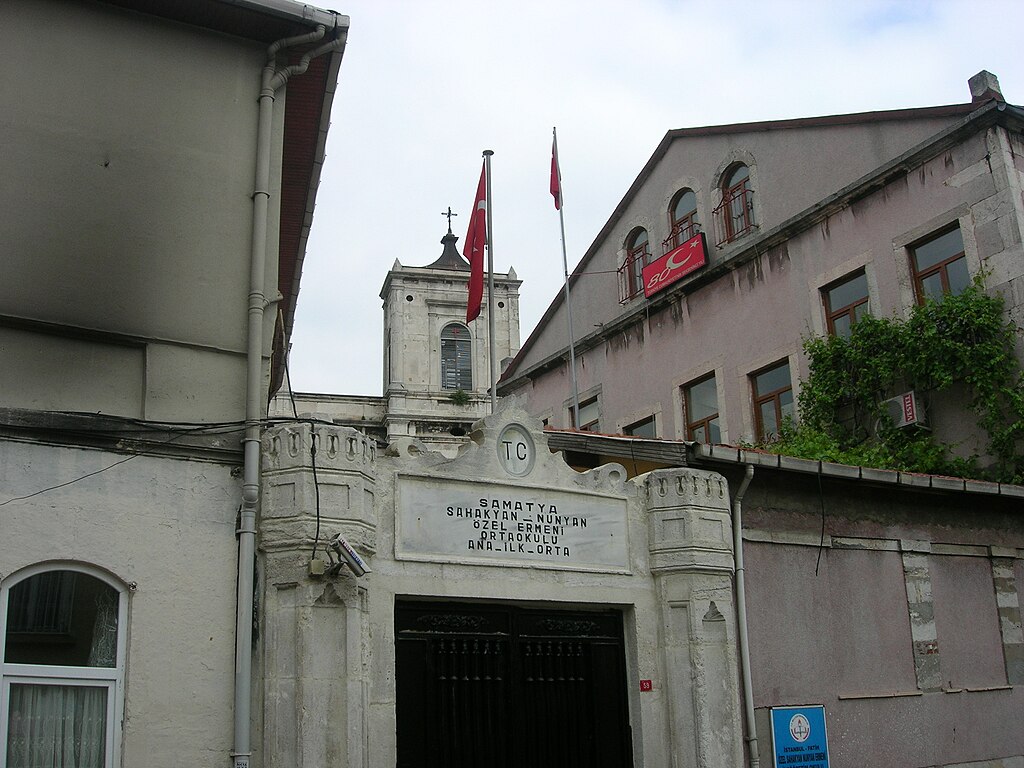Samatya
Samatya is a neighbourhood in Istanbul which is located along Marmara Sea. The west border of this area is Yedikule. About 383 AD the first monastic institution was established in Constantinople, at Psamatheia, at that time still outside the walled city. Nowadays, Samatya was mostly inhabited by Armenians, who were settled here in 1458 by Sultan Mehmet II.
The most famous church of Samathya is the church of Surp Kevork (St. George) which also called Sulu Manastır (Water’s Monastery). This church previously was an Orthodox church with the name Monastery Perivleptos. (This Byzantine church of the Virgin, built by Romanos III Argyros in 1030-1034, located in the southwest part of the city. The original Byzantine structure or follow the cruciform were either domed basilica with ambulatory. The 19th century had been destroyed by fire.)
The Biggest (most known) Churches of Samatya:

Studion Monastery Studion Monastery (in 15th century converted to İmrahor Mosque): The Studion Monastery founded in the 5th century by the consul Studites. From the monastic complex survived only certain features lots of original basilica.
- St. Menas: Very close to the church of St. Nicolas is also the church of St. Menas. Built on Byzantine foundations, the church was known until the late 18th century as Saint Polycarp.

St. Nicolas St. Nicolas: The church burned down in the big fire of 1782 and rebuilt. In this church at the very first years of 18th century there were a school and an orphanage.
- St. George Kyparissios: A poor parish of the neighbourhood named Vlagna. This place is situated very close to Samatya. In 1625 the church was the oldest church of Samatya which saved integrated.
- The Church of St. Constantine & Helen: The church was destroyed in 1660, like other churches, by fire, but rebuilt soon. This church was fired again in 1696 and in 1782. Nowadays there is a church in this place with the same name but this is a new one. The final church built in 1804.
The tension in Greek-Turkish relations in the mid-1950s was the context in which they occurred, attacks against the Greeks of Constantinople in September 1955. The nationalist exaltation in Turkey on the occasion of the Cyprus issue had already formed an explosive situation in Constantinople, which was further exacerbated by news of the attack on the Turkish consulate in Thessaloniki. By these years many churches got into fire again, and the Greek minority suffered a lot in Istanbul.
Nowadays in the narrow streets of Samatya there are many imposing buildings but most of them are in a very bad condition. Samatya has the reputation of one of the most fanatic-Islamist places of Istanbul. Some of the Greek Orthodox Churches operate once per month. Some others have been given to other minorities of the city, as Syrians, in order to use it as church.
Samatya is one of the most traditional places of Istanbul. The wooden-storey houses are everywhere in this area. By visiting Samatya, not only can someone behold these wonderful buildings, but also can visit many historical places.


